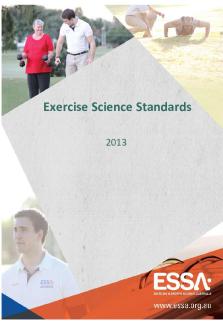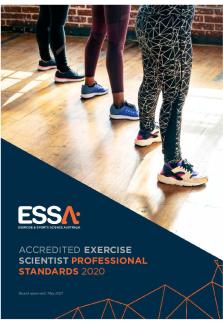Chapter+2-+THE+ Professional+ Standards PDF

| Title | Chapter+2-+THE+ Professional+ Standards |
|---|---|
| Author | Rbck |
| Course | BS Accountancy |
| Institution | Mindanao Polytechnic College |
| Pages | 2 |
| File Size | 64.6 KB |
| File Type | |
| Total Downloads | 22 |
| Total Views | 196 |
Summary
Chapter 2- The Professional Standards S1: The Generally Accepted Auditing Standards provide the minimum requirements in the conduct of audit. True S2: Quality Review Commission is the one who conduct a quality review on applicants for registration to practice public accountancy. False S1: In the aud...
Description
Chapter 2- The Professional Standards 1. S1: The Generally Accepted Auditing Standards provide the minimum requirements in the conduct of audit. True S2: Quality Review Commission is the one who conduct a quality review on applicants for registration to practice public accountancy. False 2. S1: In the auditing environment, failure to meet auditing standards is often accepted practice. False S2: Standards on Fieldwork states the requirements of the auditor in the conduct of audit. False 3. S1: Quality Review Committee is the one who conducts a quality review on applicants for registration to practice public accountancy. True S2: The auditor is not liable to his client for his errors in application of judgment. True 4. S1: In the auditing environment, failure to meet auditing standards is often tantamount to criminal behavior. False S2: The auditor is liable to his client for his errors in application of judgment. False 5. S1: GAAS is grouped into two standards. False S2: In the auditing environment, failure to meet auditing standards is often conclusive evidence of negligence. True 6. S1: Auditors should either maintain independence in fact or independence in appearance. False S2: GAAS has ten standards. True 7. S1: The auditor is not liable to his client for his dishonesty. False S2: Standards are established to measure the quality of performance of individuals and organizations. True 8. S1: Standards on reporting states the minimum requirements in expressing opinions. True S2: Auditors should verify first the integrity of the client before to accept an engagement. True 9. S1: The Generally Accepted Accounting Principles provide the minimum requirements in the conduct of audit. False S2: The standard of due care requires the auditor to possess skills clearly above the average for the profession. False 10. S1: The standard of due care requires the auditor to apply judgment in a conscientious manner, carefully weighing the relevant factors before reaching a decision. True S2: The certificate of accreditation to practice public accountancy is only valid for 3 years and not subject to renewal. False 11. S1: Professional skepticism is an application of training, knowledge and experience in making informed decisions during the audit. False
S2: Sufficiency of audit evidence means that the quantity should be met. False 12. S1: Professional judgment involved critical assessment of evidence. False S2: If risk of material misstatement assessed at high level, the nature of the auditor’s procedures should be more effective. True 13. S1: If risk of material misstatement assessed at low level, the timing of the procedures should be at year end. False S2: Professional judgment is an application of training, knowledge and experience in making informed decisions during the audit. True 14. S1: Evidence directly acquired by auditors are more reliable compared with evidence coming from external. True S2: If risk of material misstatement assessed at low level, the extent of the samples should be larger. False 15. S1: Sufficiency is more preferable in gathering audit evidence. False S2: If risk of material misstatement assessed at high level, the nature of the auditor’s procedures should be less effective. False...
Similar Free PDFs

Chapter 2 professional standards
- 35 Pages

Chapter 2 professional standards
- 35 Pages

AES-Professional-Standards
- 31 Pages

Chapter 2 professional standards
- 35 Pages

AES Professional Standards from2022
- 23 Pages

NMBA Standards
- 2 Pages

Standards Hotel
- 59 Pages
Popular Institutions
- Tinajero National High School - Annex
- Politeknik Caltex Riau
- Yokohama City University
- SGT University
- University of Al-Qadisiyah
- Divine Word College of Vigan
- Techniek College Rotterdam
- Universidade de Santiago
- Universiti Teknologi MARA Cawangan Johor Kampus Pasir Gudang
- Poltekkes Kemenkes Yogyakarta
- Baguio City National High School
- Colegio san marcos
- preparatoria uno
- Centro de Bachillerato Tecnológico Industrial y de Servicios No. 107
- Dalian Maritime University
- Quang Trung Secondary School
- Colegio Tecnológico en Informática
- Corporación Regional de Educación Superior
- Grupo CEDVA
- Dar Al Uloom University
- Centro de Estudios Preuniversitarios de la Universidad Nacional de Ingeniería
- 上智大学
- Aakash International School, Nuna Majara
- San Felipe Neri Catholic School
- Kang Chiao International School - New Taipei City
- Misamis Occidental National High School
- Institución Educativa Escuela Normal Juan Ladrilleros
- Kolehiyo ng Pantukan
- Batanes State College
- Instituto Continental
- Sekolah Menengah Kejuruan Kesehatan Kaltara (Tarakan)
- Colegio de La Inmaculada Concepcion - Cebu








